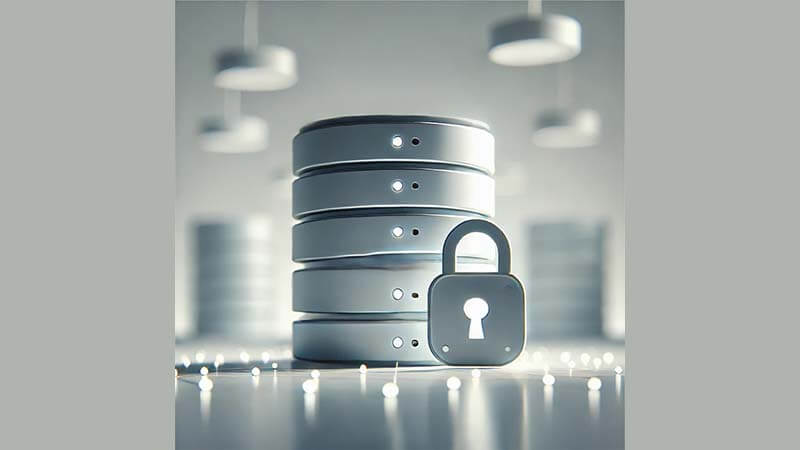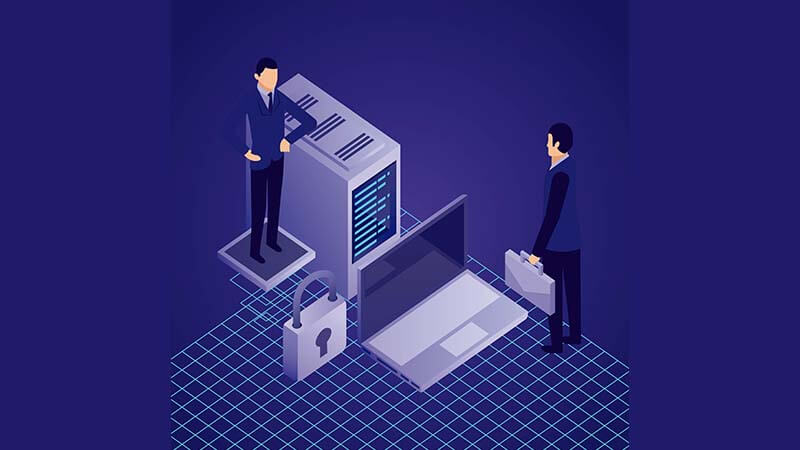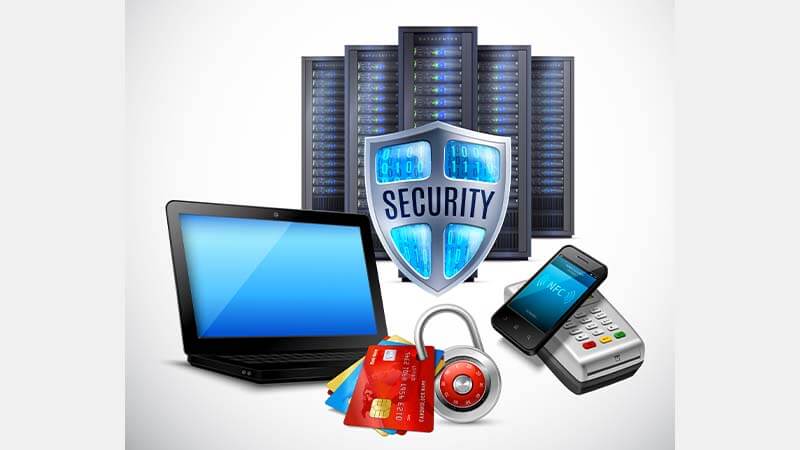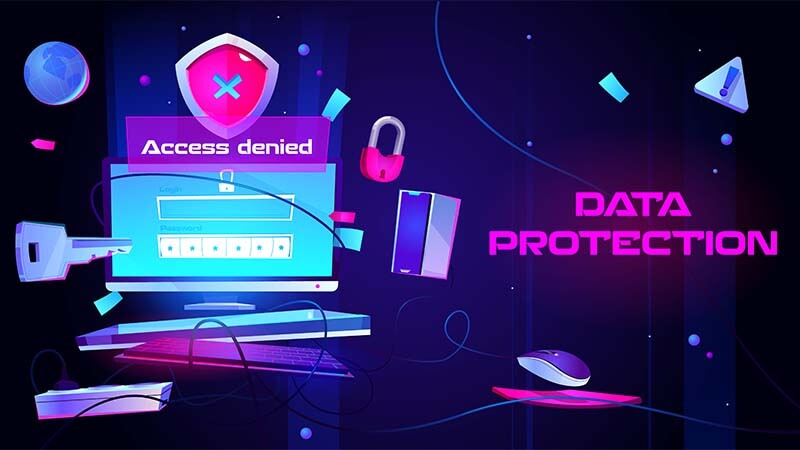A security database protects sensitive information from cyber threats and unauthorized access. It uses encryption, access control, and monitoring to keep data safe. Businesses rely on a secure database management system to prevent breaches and ensure compliance. Strong database security measures help safeguard financial, healthcare, and personal data.
Next, we’ll explore what a security database is, how it works, and why it’s essential for modern businesses. Stay with us to discover its key components, threats, and best security practices!
What is Database Security?

Database security protects stored data from cyber threats, unauthorized access, and corruption. It includes encryption, access control, and monitoring to prevent data breaches.
A secure database system ensures data integrity, confidentiality, and availability. Strong database security practices help businesses safeguard sensitive information and meet compliance standards.
Key Components of a Security Database
A security database has multiple layers of protection to keep data safe from cyber threats. It uses advanced technologies to prevent unauthorized access and data breaches. Below are the key components that make a secure database system reliable and effective.
Essential Elements of a Secure Database
- Encryption Mechanisms – Data encryption protects sensitive information by converting it into unreadable code. A database encryption system secures data both at rest and in transit, preventing unauthorized access.
- Access Control – Role-based access control (RBAC) ensures that only authorized users can view or modify data. Strong authentication, like multi-factor authentication for databases, adds extra security.
- Data Integrity – A secure database system maintains accuracy and consistency by preventing unauthorized modifications. Checksums, data validation, and integrity constraints help keep records reliable.
- Audit and Logging – A database security audit system tracks user activities and records all changes. This helps detect suspicious actions and ensures compliance with data security regulations.
These components work together to protect sensitive data, reduce risks, and improve database security management. Next, we’ll discuss the different types of security databases and their unique features.
Types of Security Databases
A security database comes in different forms, each designed to protect sensitive data from cyber threats. The right database type depends on security needs, scalability, and compliance requirements. Below are the most common types of secure databases and their key features.
Let’s learn the types of security databases:
- Relational Databases with Security Features – These databases use structured tables and SQL-based security mechanisms like encryption, role-based access control (RBAC), and query monitoring. Examples include MySQL, PostgreSQL, and Microsoft SQL Server.
- NoSQL Databases with Security Measures – NoSQL databases handle unstructured data and offer built-in security features like access control policies and encryption. Popular choices include MongoDB, Cassandra, and CouchDB, which provide scalable and flexible database security solutions.
- Cloud Security Databases – These databases are hosted on cloud platforms and use advanced security tools like automatic encryption, firewalls, and intrusion detection systems. Examples include AWS RDS, Google Cloud SQL, and Azure SQL Database, which offer secure cloud database management.
- Blockchain-Based Security Databases – These decentralized databases use blockchain technology to prevent data tampering and unauthorized changes. Immutable records and cryptographic hashing make them highly secure for financial and legal transactions.
Each secure database model has unique benefits and security measures. Next, we’ll explore common database security threats and how to protect against them.
Common Security Threats and Challenges in Database Security

Database security is crucial in protecting sensitive data from unauthorized access, manipulation, or loss. Here are some of the most common security threats and challenges that can affect databases.
1. SQL Injection Attacks
SQL injection is a significant threat to database security. Attackers use this method to inject malicious SQL code into a database query. By exploiting input fields in web applications, they can bypass security measures, access data, or even delete it. To prevent this, it’s essential to validate all inputs and use prepared statements in your database queries.
2. Unauthorized Access
Unauthorized access occurs when individuals gain entry to the database without the proper permissions. This can happen due to weak passwords, poor authentication systems, or using default credentials. Attackers can steal sensitive information or make unauthorized changes if they access the database. Ensuring strong access controls and regularly updating passwords is key to defending against this threat.
3. Data Breaches
A data breach occurs when confidential information is exposed or stolen from a database. Hackers may directly target the database or exploit vulnerabilities in connected systems. Data breaches can have serious consequences, such as identity theft or financial losses. Regular security checks and encryption of sensitive data help mitigate this risk.
4. Insider Threats
Insider threats come from employees, contractors, or anyone with authorized access to the database. They can intentionally or accidentally leak data or cause damage to the system. To prevent this, it’s important to limit access based on the role of each individual and monitor database activity regularly.
5. Misconfigured Databases
Incorrect database configurations can leave systems vulnerable to attacks. For example, leaving unnecessary features enabled or not disabling unused ports can create entry points for attackers. Regular database audits and ensuring that configurations follow security best practices can help close these gaps.
6. Malware and Ransomware
Malware, including viruses, worms, and ransomware, can infiltrate databases and corrupt data. Ransomware is particularly dangerous because it locks users out of their data and demands a ransom to restore access. Protecting the database with updated antivirus software and secure backup procedures can reduce the risk of these attacks.
7. Weak Data Encryption
Data encryption is critical for protecting sensitive information in databases. If encryption is weak or not implemented correctly, attackers may gain access to readable data. Using strong encryption algorithms for both data at rest and data in transit is essential to maintain privacy and security.
8. Privilege Escalation
Privilege escalation occurs when an attacker gains higher access rights than authorized. This can happen by exploiting flaws in the system or misconfigurations. To prevent this, it’s important to limit database permissions strictly based on user roles and monitor user activities for suspicious behavior.
9. Backup Security
Backup files are crucial for database recovery, but they also need to be secure. If backup data is not encrypted or stored properly, attackers could gain access to it. Ensuring that backup files are protected with encryption and stored securely is vital for preventing unauthorized access.
10. Delayed Updates and Patches
Databases are often targeted through known vulnerabilities that can be fixed with updates. However, if these updates and patches are not applied regularly, attackers can exploit them. Keeping the database software up to date with the latest security patches is essential for protecting against known threats.
Database security is critical for safeguarding sensitive data and maintaining business operations. By staying proactive and continuously improving security practices, businesses can defend against the ever-evolving landscape of database threats.
Database Security Solutions and Tools

Effective database security solutions and tools help protect sensitive data from cyber threats, unauthorized access, and breaches.
These technologies strengthen secure database management and ensure compliance with industry regulations.
Let’s learn some essential database security tools and solutions used to safeguard information.
- Database Firewalls – Prevent SQL injection attacks, malware, and unauthorized queries by filtering database traffic and blocking malicious activity.
- Intrusion Detection and Prevention Systems (IDPS) – Monitor database activities in real time, detect anomalies, and respond to potential security threats.
- Data Encryption Solutions – Secure sensitive database records by encrypting data at rest and in transit, preventing unauthorized access.
- Access Control and Authentication Systems – Implement role-based access control (RBAC), multi-factor authentication (MFA), and privilege management to restrict access to authorized users.
- Data Masking and Tokenization Tools – Protect personally identifiable information (PII) and financial data by replacing real data with masked or tokenized values.
- Security Information and Event Management (SIEM) Systems – Provide centralized database security monitoring, threat detection, and compliance management through real-time log analysis.
- Automated Compliance and Risk Assessment Tools – Ensure adherence to security regulations like GDPR, HIPAA, and CCPA with automated audits and risk assessments.
These database security technologies help organizations defend against cyber threats and maintain a secure database infrastructure.
Best Practices for Securing Databases

Securing databases is vital for protecting sensitive information from threats. By implementing a combination of proactive measures, organizations can create a robust defense against common security risks. Below are some of the best practices to follow:
1. Strong Authentication and Role-Based Access Control
Implementing strong authentication ensures that only authorized users can access the database. Use multi-factor authentication (MFA) to add an extra layer of security. Additionally, role-based access control (RBAC) should be employed to grant users access only to the data and functions they need. This reduces the risk of unauthorized access and limits the damage if an account is compromised.
2. Regular Security Updates and Patch Management
Keeping the database software and related systems updated is crucial for defending against known vulnerabilities. Database vendors often release patches to fix security flaws, so it’s essential to apply these updates as soon as they become available. Regular patch management ensures that attackers cannot exploit outdated software to gain access to the system.
3. Data Encryption (At-Rest and In-Transit)
Encrypting data both at-rest (while stored) and in-transit (while being transferred) is a fundamental step in protecting sensitive information. Strong encryption algorithms ensure that even if an attacker gains access to the database, they won’t be able to read or use the data. Implement encryption across all database layers to ensure comprehensive protection.
4. Database Backup and Disaster Recovery Plans
Regular database backups are essential for ensuring that data can be recovered in the event of a breach, system failure, or disaster. Store backups securely, preferably encrypted, and regularly test the recovery process. Having a disaster recovery plan in place ensures that you can restore your database quickly and efficiently, minimizing downtime and data loss.
5. Intrusion Detection and Prevention Systems (IDPS)
Intrusion Detection and Prevention Systems (IDPS) help identify and block malicious activity on your network. An IDPS can monitor traffic and detect suspicious behavior or attacks, such as SQL injection or brute-force login attempts. Setting up an IDPS in front of your database can help identify potential threats early and stop them before they cause harm.
Securing databases requires a multi-layered approach. Regularly reviewing and updating security practices is key to staying ahead of potential vulnerabilities and ensuring data integrity and confidentiality.
The Future of Secure Database Technologies

As cyber threats evolve, database security must continuously adapt to protect sensitive information. Advanced technologies and innovative security measures are shaping the future of secure database management.
Here are key advancements in database security that will shape the future of data protection.
- AI and Machine Learning for Threat Detection
Artificial intelligence (AI-driven database security) is enhancing threat detection by analyzing patterns and identifying anomalies in real time. Machine learning security algorithms can predict cyber threats and prevent breaches before they happen. - Zero-Trust Security Architecture for Databases
The zero-trust database security model eliminates blind trust, requiring strict authentication and continuous monitoring. This approach ensures that only verified users and applications can access sensitive data. - Advancements in Quantum-Resistant Encryption
With the rise of quantum computing, quantum-resistant encryption for databases is becoming essential. These encryption methods will protect data from potential decryption by powerful quantum computers. - Automated Compliance and Risk Management Solutions
Businesses are adopting automated security compliance tools to meet regulations like GDPR, HIPAA, and CCPA. These tools help in real-time risk assessment and ensure that databases remain compliant with global security standards.
These emerging database security technologies will play a crucial role in protecting data from advanced cyber threats. As security challenges grow, organizations must adopt these innovations to stay ahead in database protection and risk management.
Frequently Asked Questions:
Q1. Why is database security important for businesses?
Database security protects sensitive business data from cyber threats, unauthorized access, and breaches. It ensures data integrity, compliance with regulations, and business continuity.
Q2. How do cybercriminals exploit database vulnerabilities?
Cybercriminals use methods like SQL injection, phishing, brute force attacks, and malware to exploit weak security settings and gain unauthorized access to databases.
Q3. What are the consequences of weak database security?
Weak security can lead to data breaches, financial loss, reputational damage, legal penalties, and compliance violations under laws like GDPR and HIPAA.
Q4. How can businesses prevent database security breaches?
Businesses can implement encryption, firewalls, multi-factor authentication (MFA), regular security audits, and intrusion detection systems to prevent breaches.
Q5. What role does AI play in database security?
AI enhances threat detection, anomaly detection, and automated response by identifying suspicious patterns and preventing cyberattacks in real time.
Q6. How does cloud database security differ from on-premise security?
Cloud databases rely on provider-based security measures, automated updates, and scalability, while on-premise databases require manual security management and internal infrastructure protection. Learn more.
Q7. What are the best practices for securing sensitive data in databases?
Best practices include strong access control, regular updates, encryption, backup policies, and continuous monitoring to prevent unauthorized access and data loss.
Wrapping Up:
A security database is essential for protecting sensitive data from cyber threats and unauthorized access. Strong encryption, access control, and monitoring ensure data integrity and compliance. Businesses must adopt advanced database security solutions to prevent breaches and maintain trust. Prioritizing security database management helps safeguard valuable information in an evolving digital landscape.








